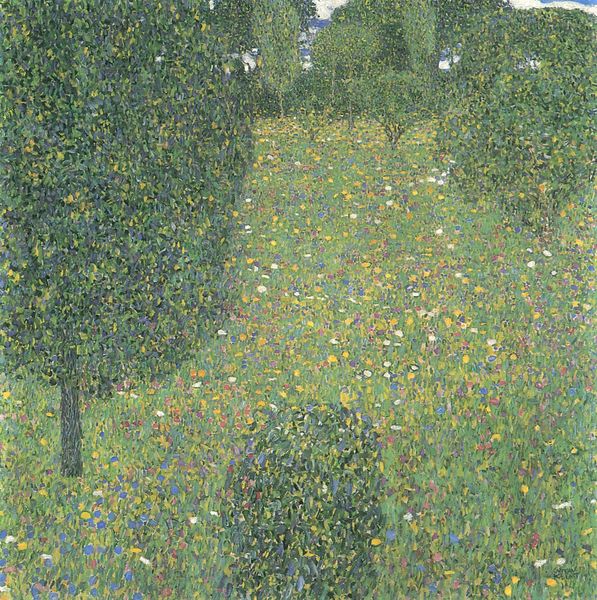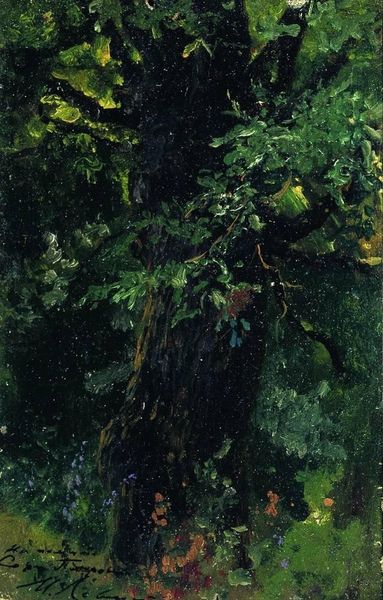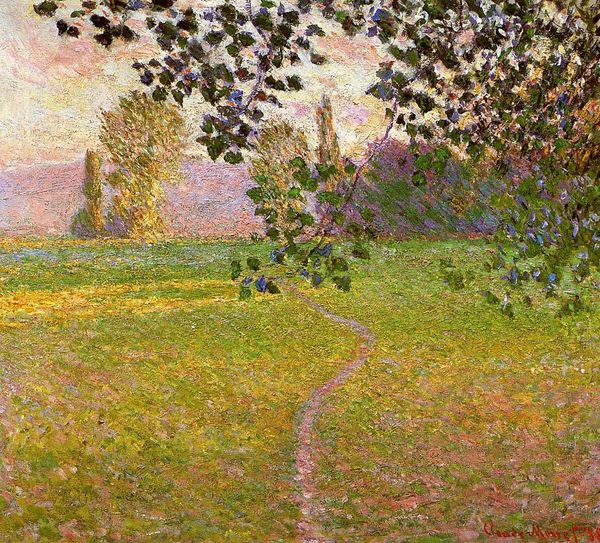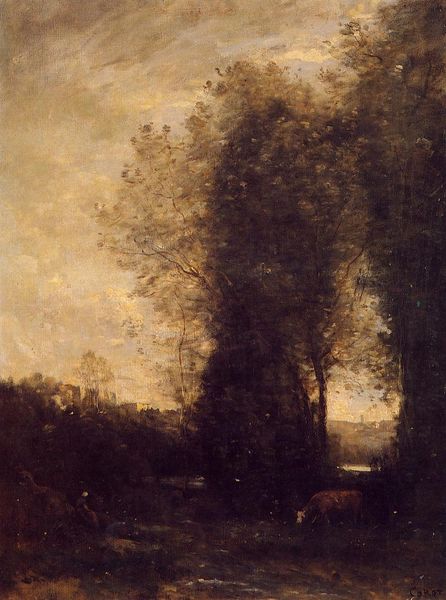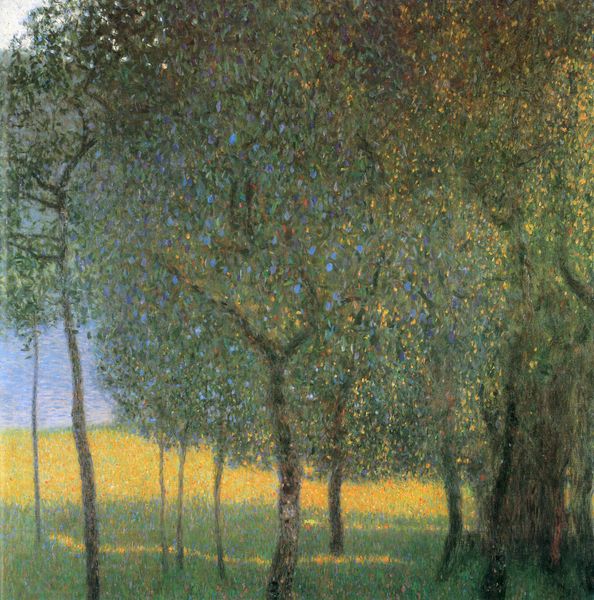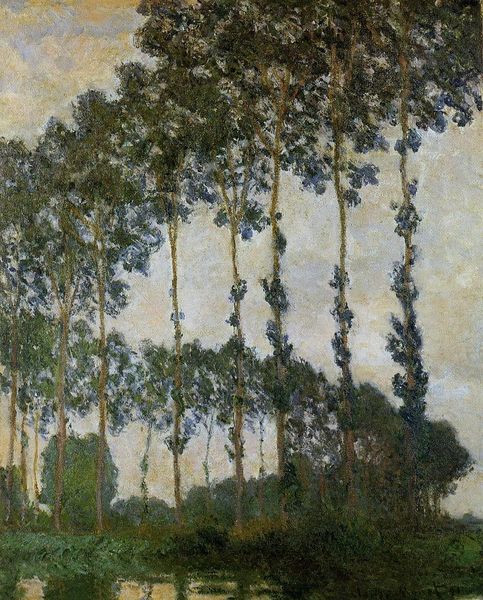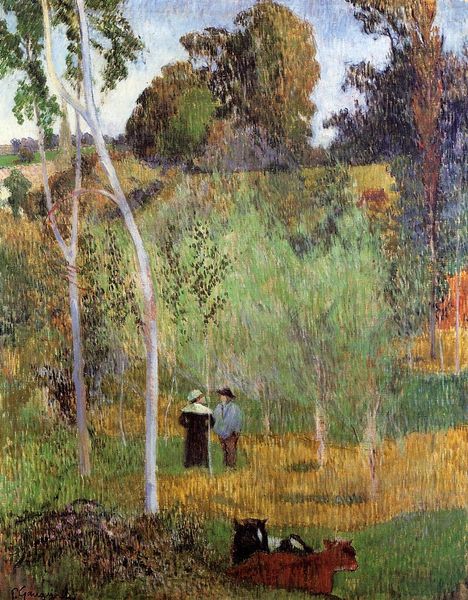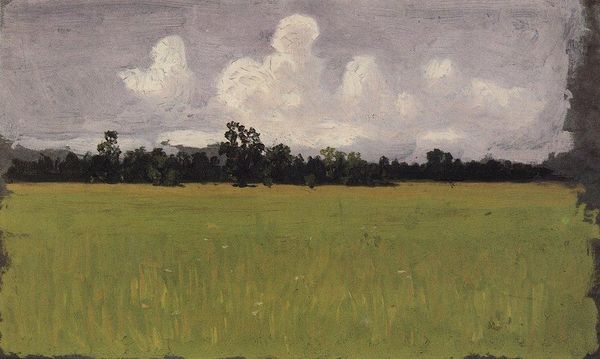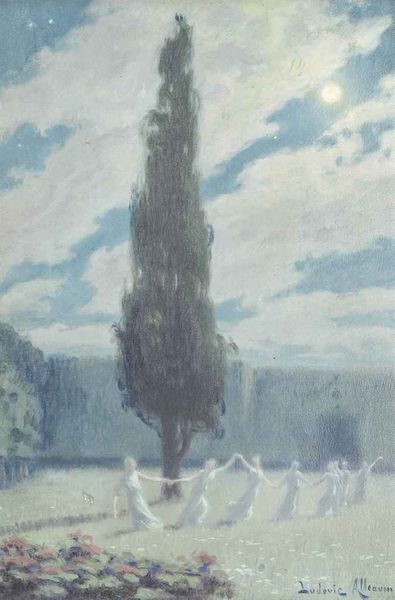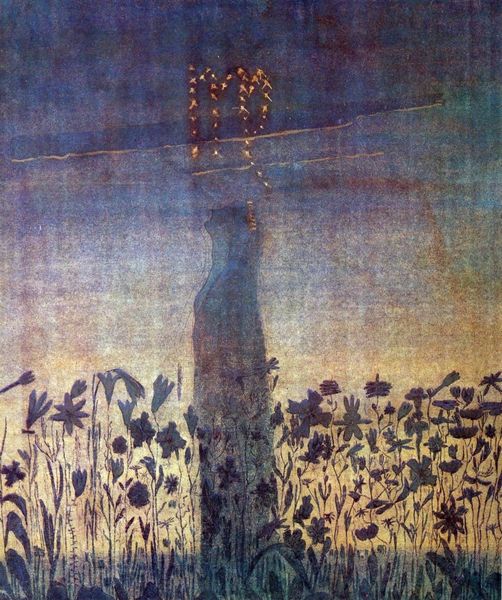
Copyright: Public domain
Editor: Here we have Gustav Klimt’s “The Tall Poplar Trees II,” created around 1900 with oil paint, in plein-air. It gives me a strangely somber feeling. It looks peaceful but there is something about that dark central tree. What do you see in this piece? Curator: This work, painted around 1900, arrives at a crucial juncture in Klimt’s career and in European history. It speaks to anxieties about rapid industrialization and the search for stability in the face of societal transformation. Those dark trees aren't just dark; they loom like monuments, suggesting perhaps, the imposing, and sometimes oppressive, forces of nature, tradition, or even the state. Editor: Oppressive? The lighter colors of the field and sky almost give it a hopeful quality, though. Curator: Absolutely, there's a tension at play! The green field might symbolize hope, or a return to nature, an escape from urban chaos. But who has access to that escape? Who profits from the romantic ideal of the natural world? Consider how the "escape" to the countryside was, and continues to be, a privilege often unavailable to working-class people. The almost hazy sky, in contrast with the distinct sharpness of the foreground, speaks to an ever-shifting, dream-like state. Editor: So you’re saying even seemingly simple landscapes can reflect deeper social issues? Curator: Precisely. Klimt, in my view, is grappling with questions of class, access, and the allure of the natural world. Consider his later, more overtly symbolic work – the seeds of these explorations are evident even here, don’t you think? It’s not just about pretty trees; it's about what those trees represent within a changing society. Editor: I never would have looked at it that way. I appreciate how context really transforms a piece. Curator: Absolutely. Seeing art within its historical and social moment opens up new dialogues.
Comments
No comments
Be the first to comment and join the conversation on the ultimate creative platform.

